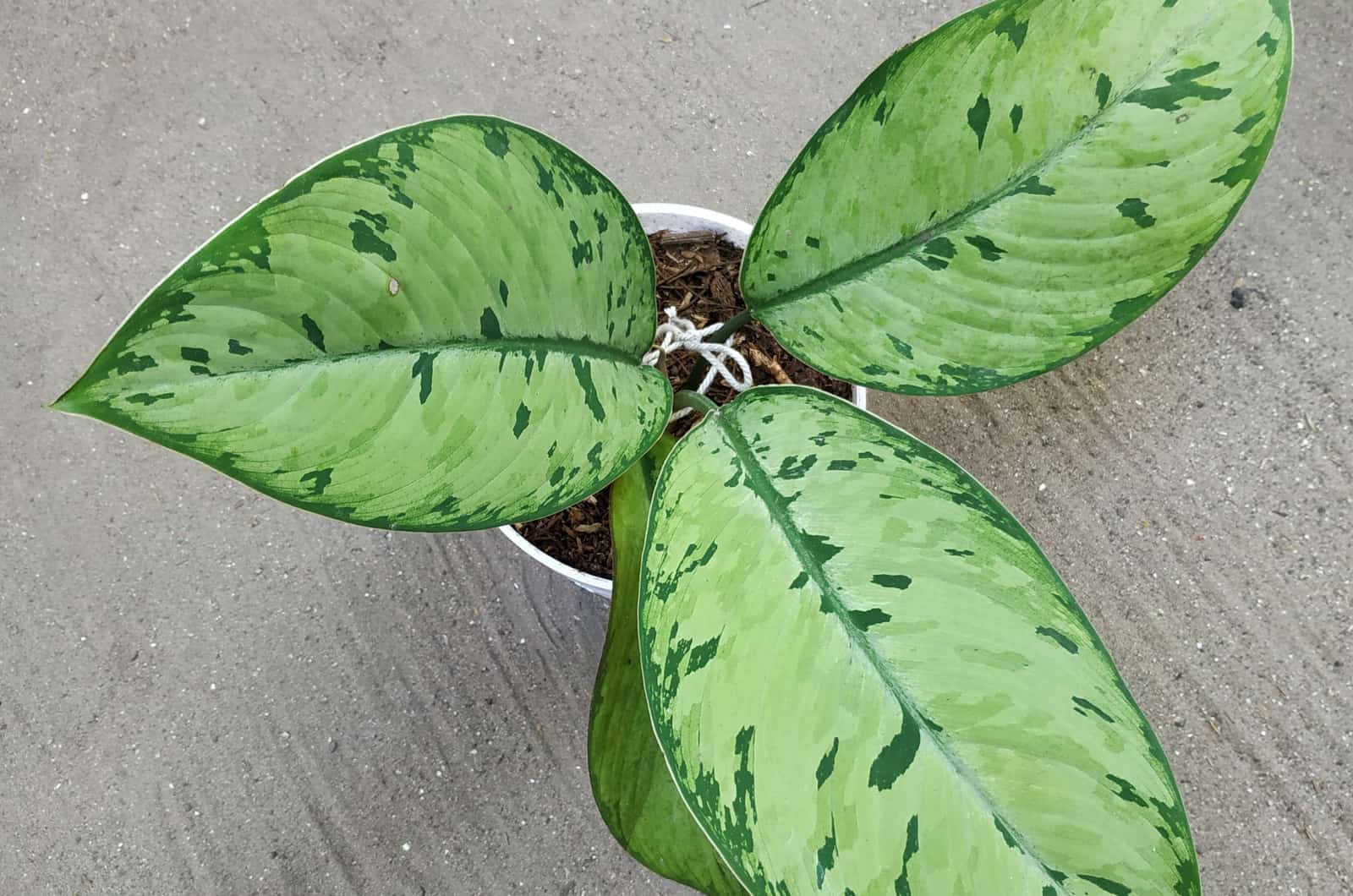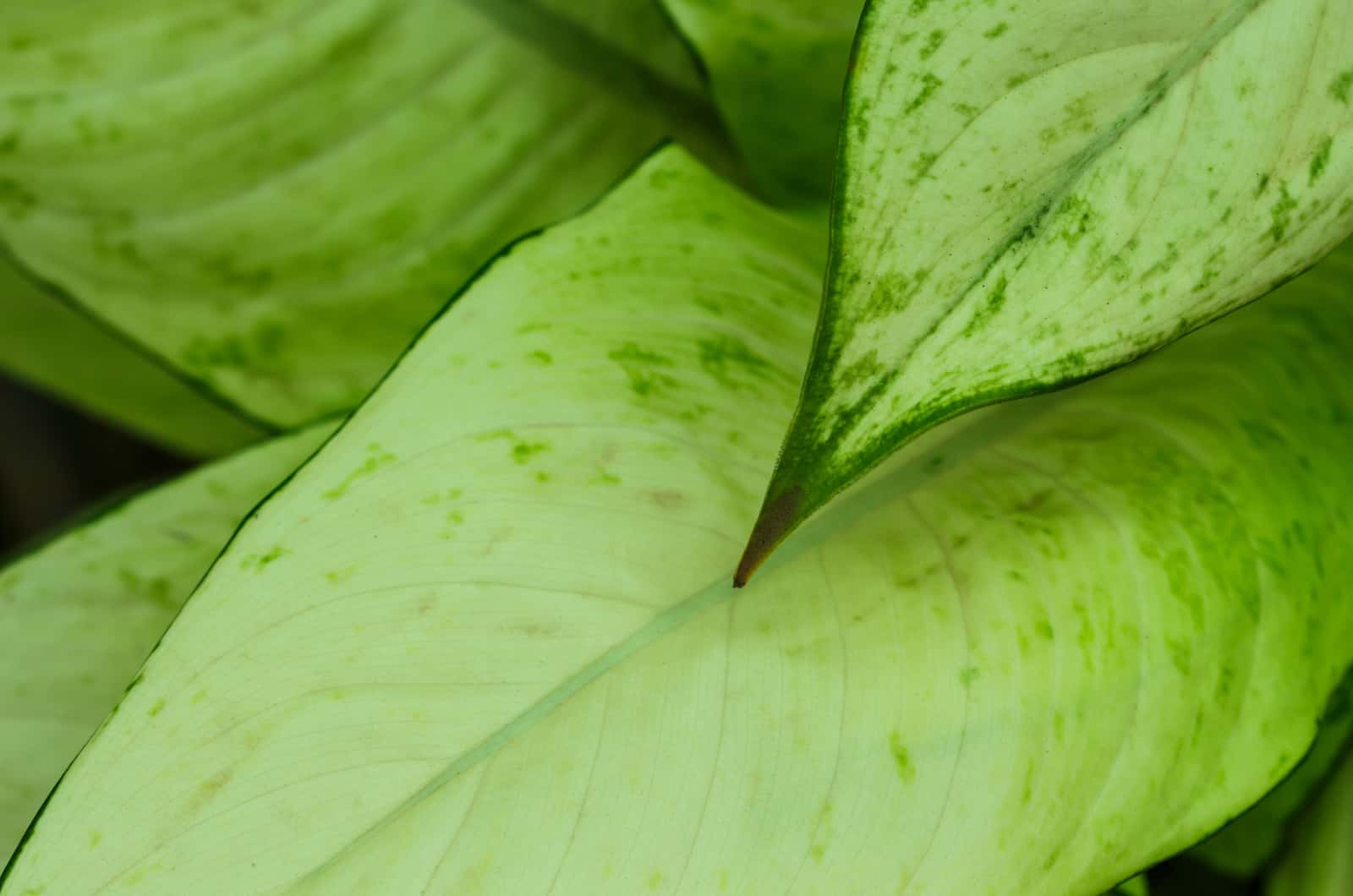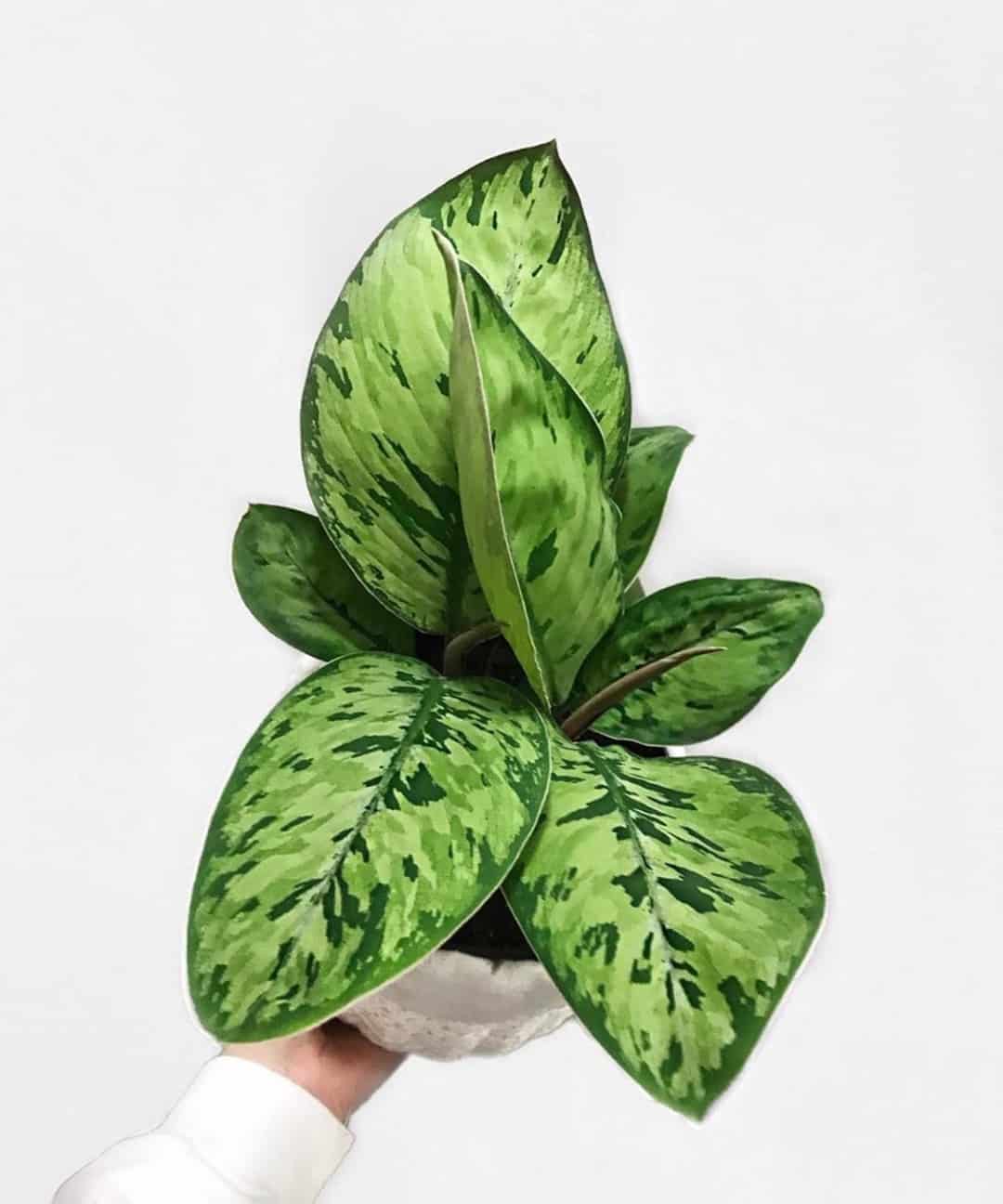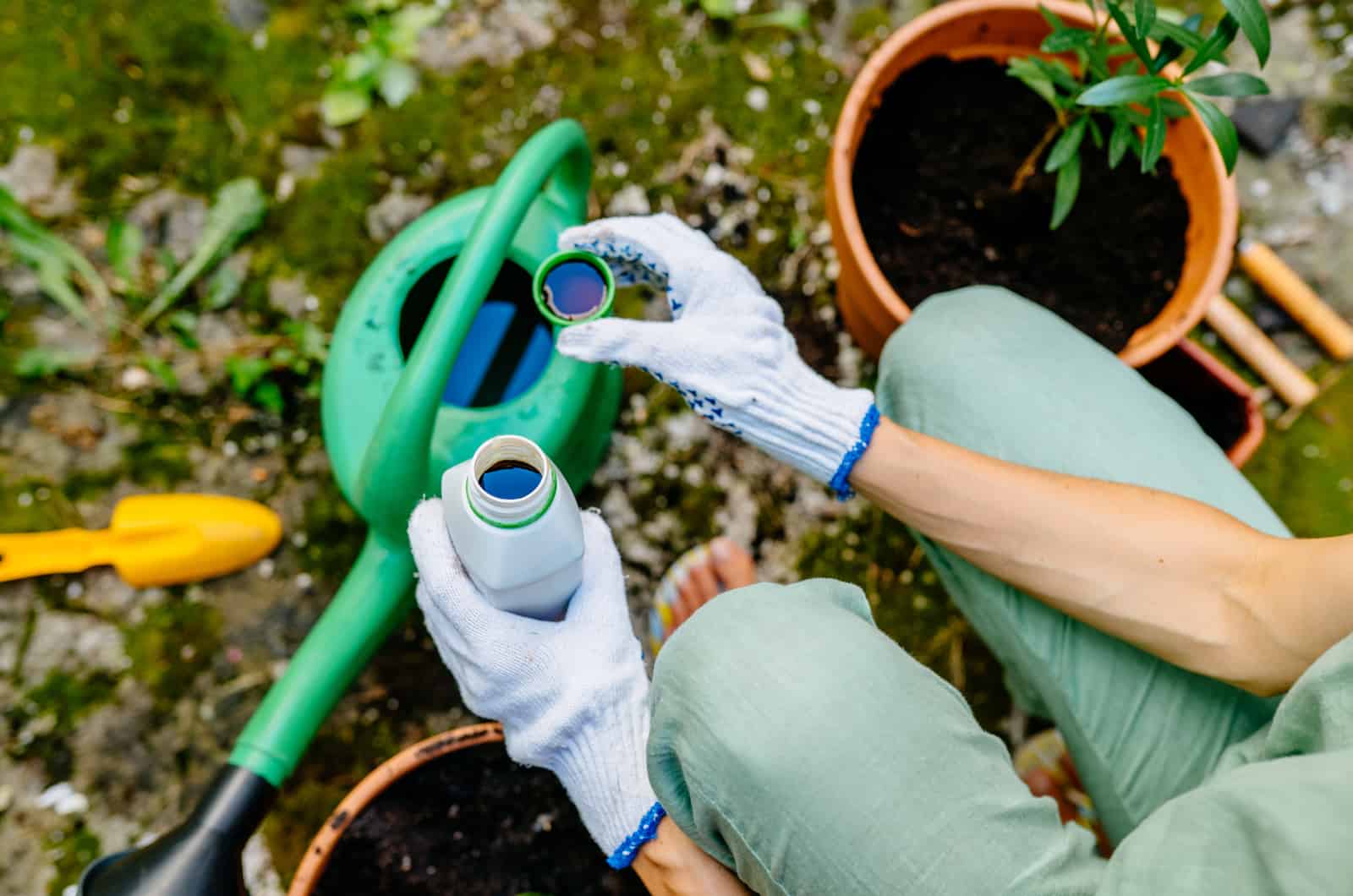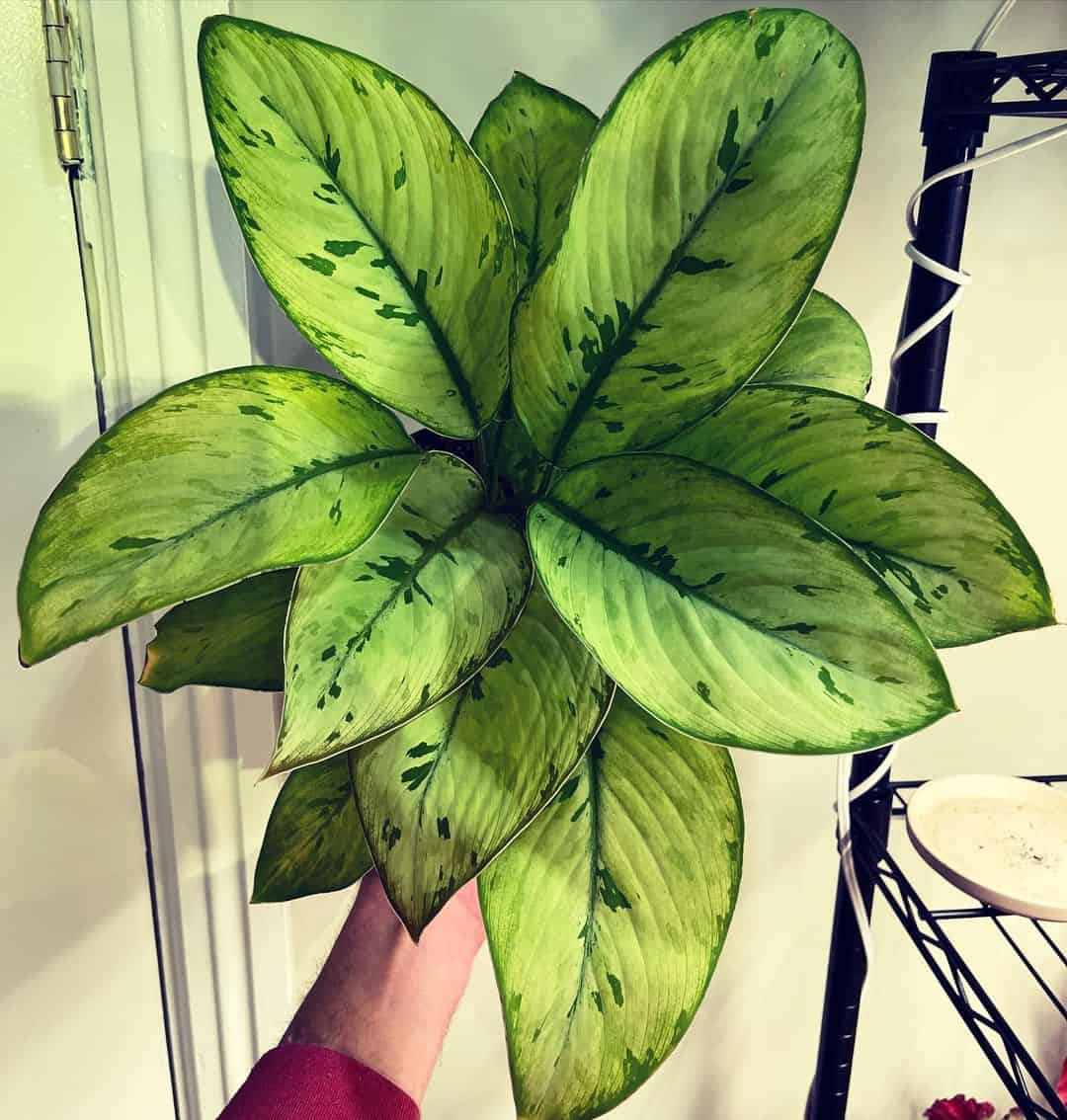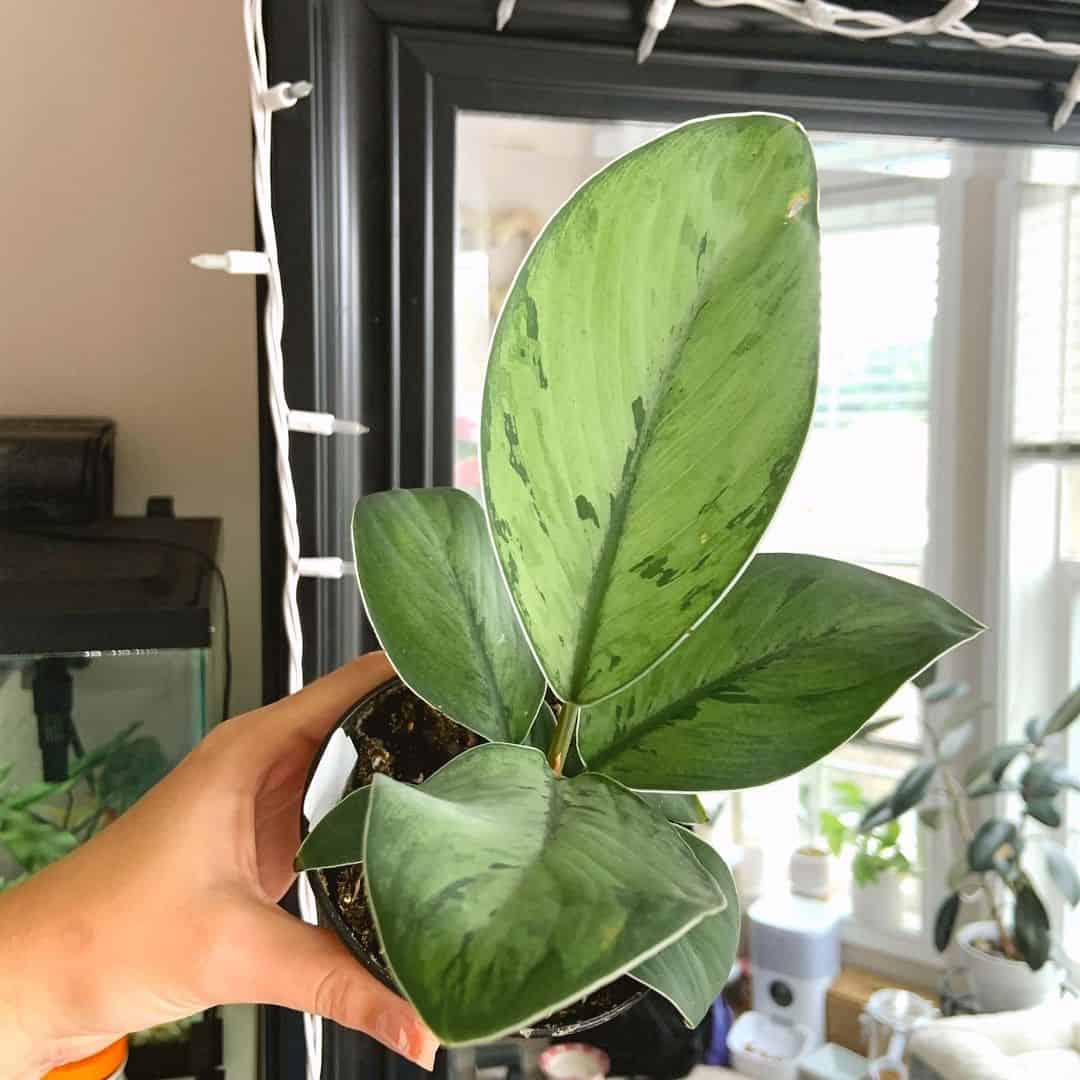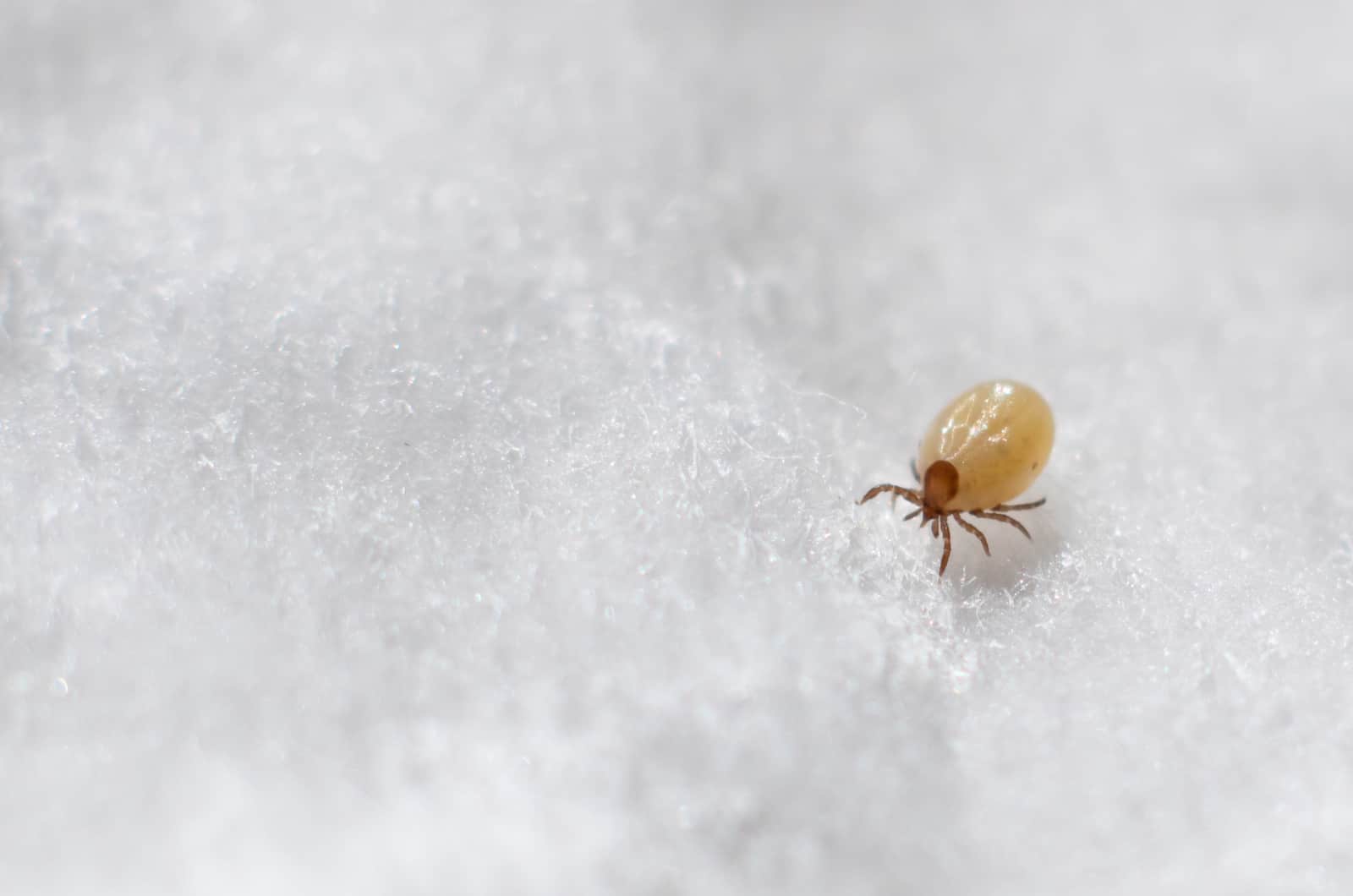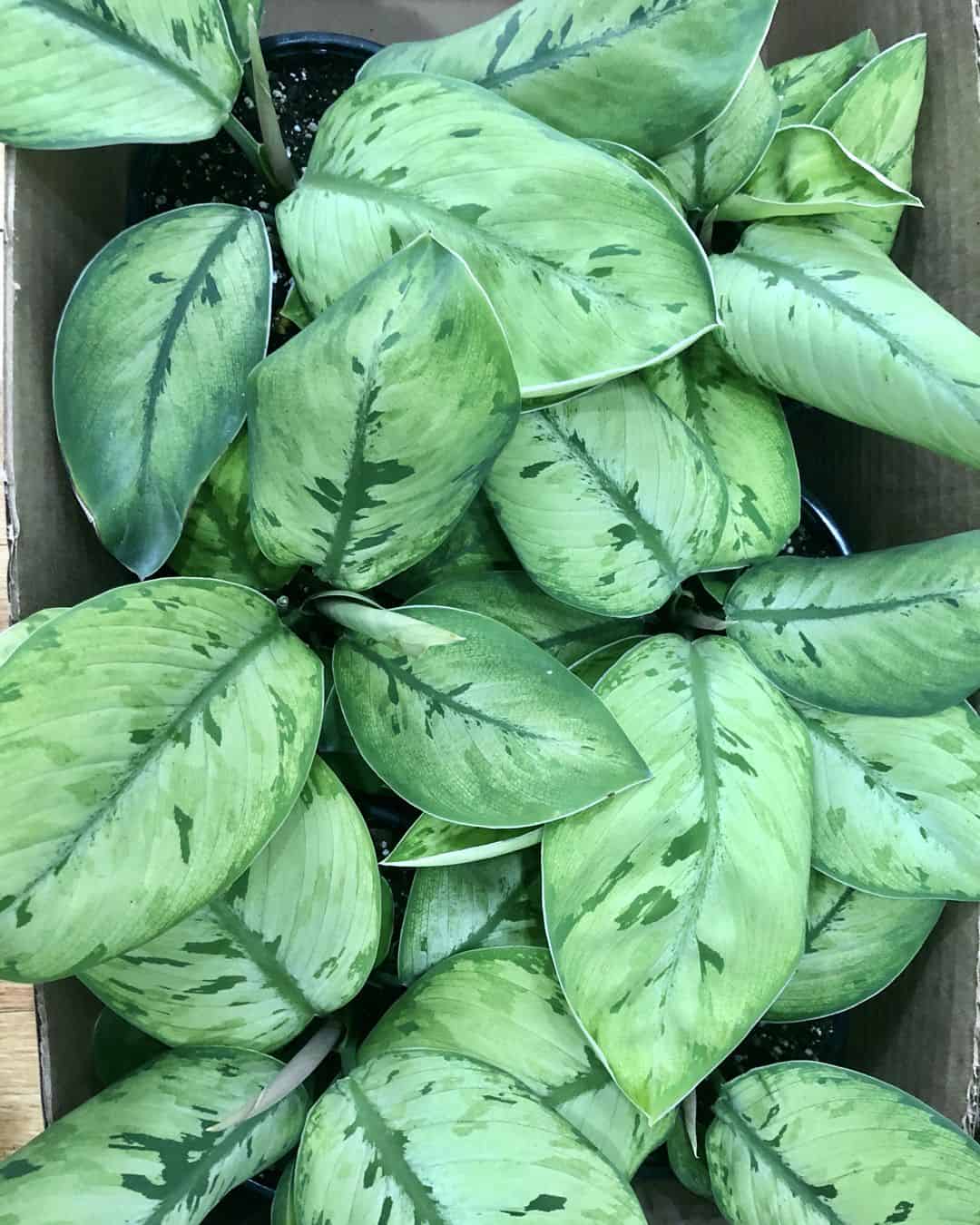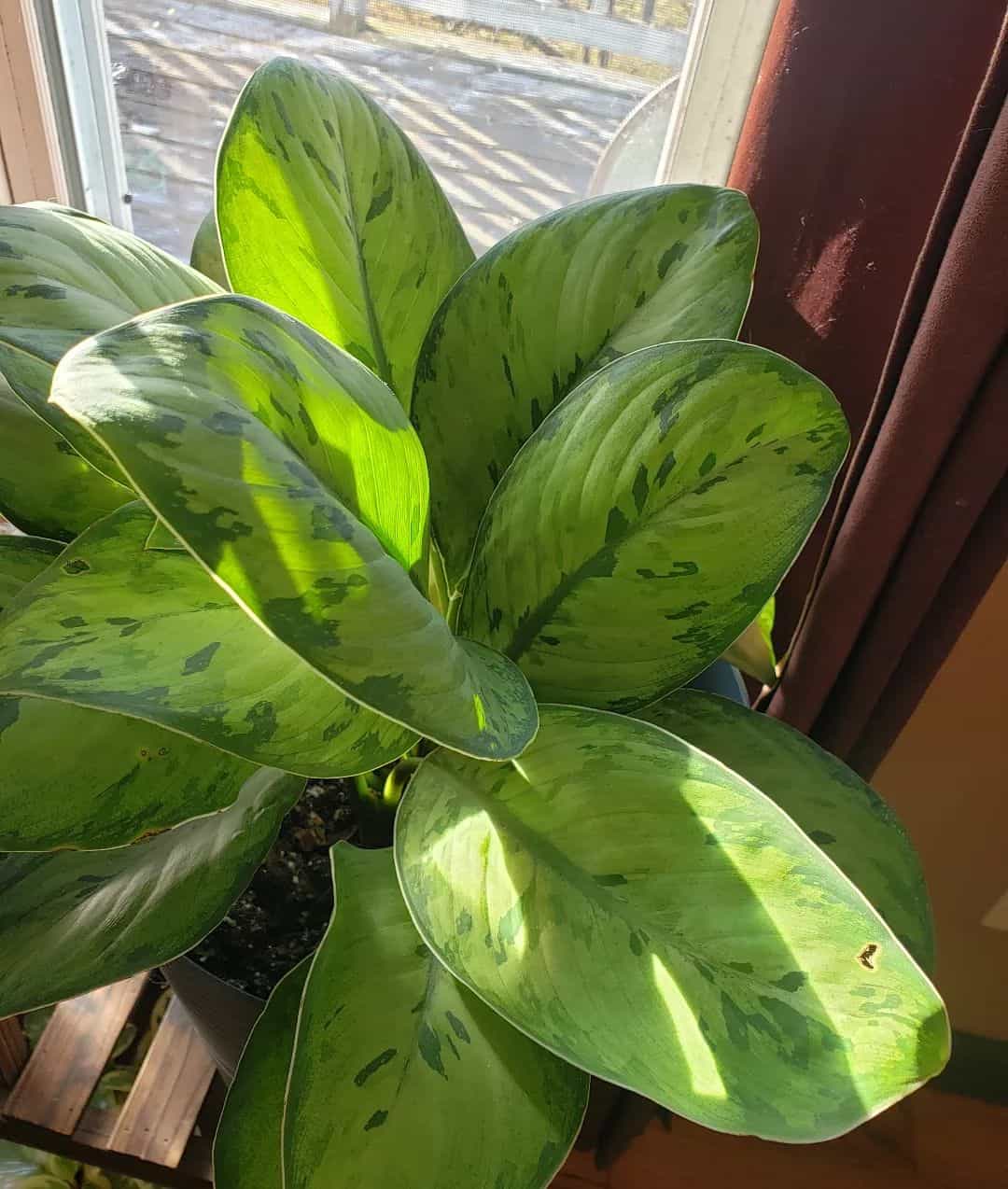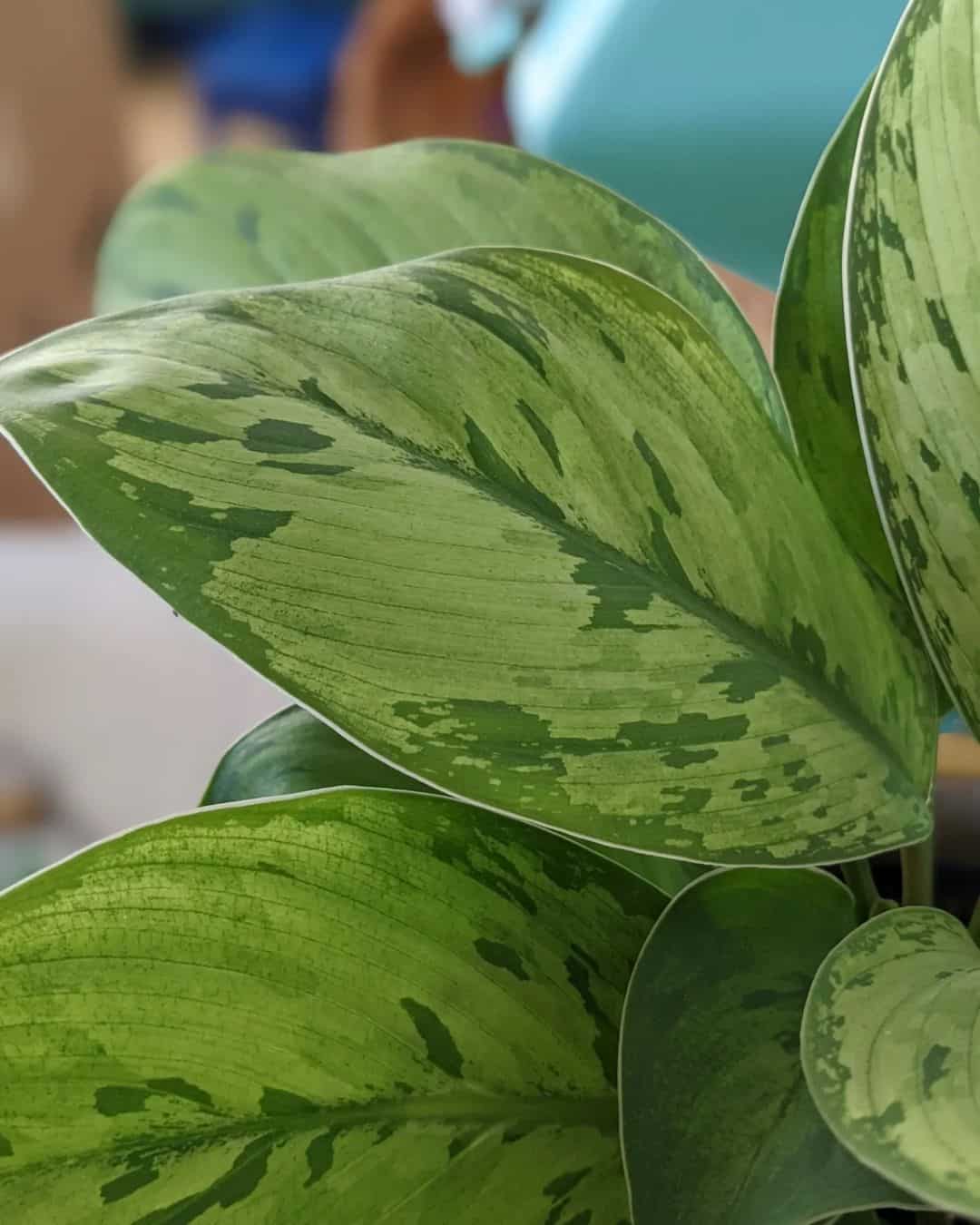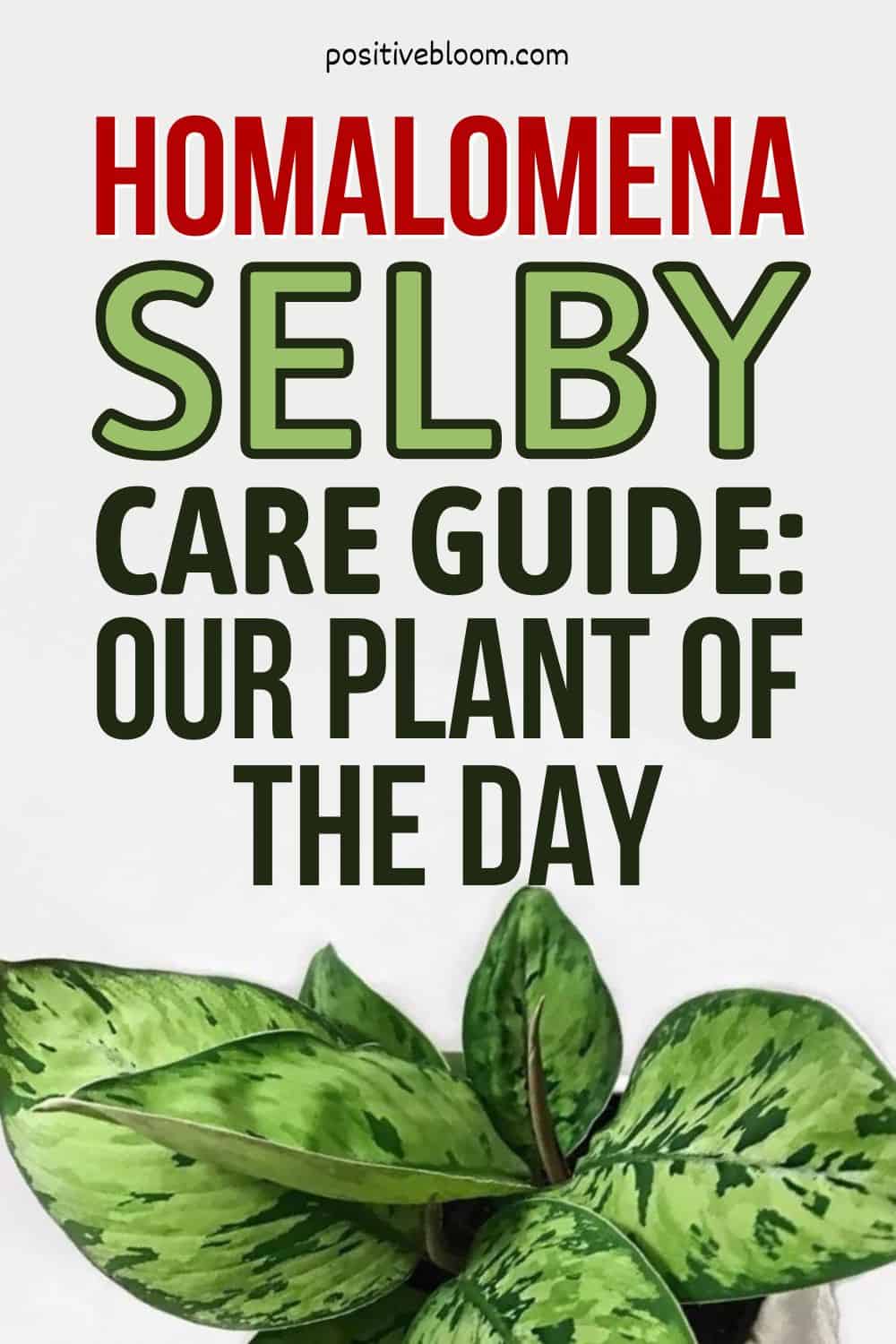Everybody needs some greenery in their life, and the Homalomena Selby is an excellent way to get it! Its speckled green foliage is irresistible, and once you find out how easy it is to grow one, you’ll find yourself at the checkout of Amazon or your local store with one of these plants before you know it!
We’re going to discuss everything about this plant, including its origin, common issues, and a detailed care guide.
But before we get sentimental, let’s look into some basic characteristics of this plant:
[table id=132 /]Now you have some basic information about the Homalomena Selby, but there is so much more to discover!
It’s a perfect beginner plant due to its ease of care, so it makes for a great gift.
Let’s look closer at the care requirements of the Homalomena Selby.
Homalomena Selby Care Guide
The Homalomena Selby is one of our favorite plants because it fits in perfectly with all our alocasias and philodendrons.
Plant care for this tropical perennial is relatively simple: keep it in bright indirect light, water it when the topsoil is dry, and plant it in an aroid potting mix.
Of course, there are some other things you’ll need to pay attention to, but it won’t take too much time, we promise.
Lighting
The Selby plant came from the deepest jungle, and we can determine its light requirements based on its native habitat.
Short plants like this one are used to protection from direct sunlight from the trees above them. This means you shouldn’t expose them to direct sun as it can burn their delicate foliage.
You should keep this plant in a spot that receives bright or moderate indirect sunlight.
The Queen of Hearts is not picky about light conditions. It can tolerate low-light levels and will continue to grow in darker places, although its growth will be considerably slower.
For optimal growth, you should place this plant in an east-facing room a few feet away from a window so you can be sure the sun can’t hurt it.
A little early morning sun is fine for this plant, just don’t let the full afternoon sun scorch the leaves. In this case, a south or west-facing window is fine.
Watering
Photo from: @peoplewithplants_official
Using the correct amount of water with the correct watering technique is a crucial part of plant care. Too much water can lead to root rot, and underwatering a Homalomena Selby plant leads to shriveling of the leaves and browning of the foliage.
So, how then do you know when and how much you should water your Selby? It’s quite easy, actually! The first thing you need to do is check whether the first couple of inches of the soil are dry.
You can put your finger in the soil to check whether it is dry, but we prefer using soil moisture meters as they have proven to be quite reliable.
You must also be careful about how you water. You should always water plants slowly, and only stop when you see water coming out through the drainage holes.
This will provide equal moisturization of the soil and hydration of the plant.
You should reduce watering in winter as growth slows down. The plant won’t use much water in this period, and excess water in the soil will likely lead to overwatering.
Temperature And Humidity
The Homalomena Selby is a tropical plant, so it needs warm temperatures to prosper. We always try to keep the temperature between 65 and 85°F (18-29°C) as it encourages growth and keeps it healthy.
Temperatures lower than 60°F (15°C) may harm your plant as it is not cold-hardy at all. You must always avoid exposing it to low temperatures, temperature changes, and drafts, as they all have the potential to cause irreversible damage.
Humidity
The Homalomena Selby doesn’t respond well to low humidity levels, and the tips of its foliage will turn brown if the humidity is too low.
The Selby plant needs high humidity to thrive, and the average humidity of our homes is usually too low for this. We have explored some different ways of raising indoor humidity levels and compiled a list of the best ones to help you out.
This plant is too large to fit in a terrarium, but there are some other ways to raise humidity around it.
Humidifiers
Perhaps using humidifiers is an idea that has already crossed your mind, and we’re here to assure you that they actually work.
Humid Rooms
Moving your tropical houseplants to more humid rooms like kitchens and bathrooms is an excellent way of providing them with ideal humidity levels for free.
You might feel reluctant to put your plants in rooms where not many people can see them, but beautiful decorations in kitchens and bathrooms is a great and unique idea.
I mean, who doesn’t want a nice green cooking companion!?
The Pebble Tray Method
The pebble tray method is another way of increasing humidity that many are hesitant to use, as they feel like the pebble tray might spoil their decor.
However, nude, black, or white trays can improve modern decor and help your plant simultaneously.
Just fill them with pebbles (or some other small rocks) and water, and place your potted Homalomena Selby over it. The water will evaporate and raise the humidity while protecting the roots to keep your plant safe.
Misting
Misting is probably the easiest method of increasing humidity, as you simply have to spray the foliage two or three times a week.
However, don’t over-mist your plants as it could lead to diseases that are difficult to treat.
Grouping Of Plants
Finally, you can group your plants together to get the perfect humid environment they need.
You might be wondering how this is possible. Well, all plants lose water via transpiration, but if you group them together the transpiration doesn’t result in loss of water, but rather the humidification of the air around the plants as its concentration is higher.
Soil And Fertilizer
Using the correct type of soil is vital for indoor plants. These plants love mildly acidic to neutral substrates with a pH between 6.5-7.0.
Neither clay nor sandy mediums are great choices, as the soil needs to be well-draining and be able to retain some water.
You can create your own mix by adding perlite and coco coir for drainage and aeration, and peat moss to help with water retention.
Mix these ingredients with your potting soil of choice and add some compost to increase fertility.
Soils rich in nutrients and organic matter are great for homalomena plants as you won’t have to fertilize them too often.
Fertilizer
If you plant the Homalomena Selby in soil enriched with compost based on loam or worm castings and repot it yearly, you won’t have to fertilize this plant any further as it will have enough nutrients for optimal growth.
However, the growth habit of this plant isn’t very fast, so we understand if you want to speed up the process.
There are several ways of feeding this plant, but we will show you the two safest and most effective methods.
The most important thing about fertilization is to reduce or stop it during the winter months. This plant actively grows from spring to summer, and only then can it use the additional nutrients.
Organic Fertilizer
Using organic fertilizer is the safest method of fertilization as you don’t risk burning your plant.
However, if you’re using organic fertilizers, you’ll have to change the entire soil mix.
Liquid Fertilizer
Liquid fertilizers are often used for feeding houseplants. You can use an all-purpose fertilizer twice a month, but you have to dissolve it in water.
Dilute it to half, or even quarter-strength, and water the plant with the solution.
This method is efficient, but you will have to flush the soil every few months to prevent salt build-up, which could destroy your plant.
Repotting
Photo from: @plantsonpapertowelroll
The Selby plant doesn’t need to be repotted more than once or twice a year as it doesn’t grow that fast.
You can repot it in the same pot and add some compost or humus to help it with its growth, or you can increase the pot size by one to two inches (2.5-5 cm) if the plant has grown.
You should repot this plant in early to late spring so it has plenty of time to adjust to its new pot and soil before the fall.
Water it thoroughly a day before repotting, and repot it in the morning before the heat can start drying the soil.
This will help to alleviate transplant shock, and your plant will have a better time acclimating to its new medium.
Finally, always use a deep pot as this plant doesn’t have shallow roots. Always use pots with drainage holes, because if the excess water cannot drain it will lead to overwatering and probably root rot.
Propagation Methods And Techniques
The Homalomena Selby can be propagated by root division or stem cutting. Propagating by stem cutting is easier, but because this homalomena has clumped roots it can also be propagated by division.
Don’t be afraid of trying either method as they’re both pretty easy to master!
Propagation By Root Division
The best time to propagate by root division is while repotting, as the plant won’t have to be stressed twice. Both repotting and propagation are best done during the active growing season.
Here’s how you can do it:
Step 1. Take the plant out of the pot and remove the dirt around the roots.
Step 2. Untangle the root ball with your bare hands. It’s best to avoid using sharp objects like scissors and knives as they might damage the plant.
However, if the roots are so clumped that you cannot divide them without cutting, be extra careful and always use sterilized equipment to avoid transferring any bacteria or fungi spores that may kill your plants.
Step 3. Fill the new pots with a fertile and well-draining potting mix, then water them thoroughly.
Step 4. Put the plants in separate containers. Make sure they have potholes and aren’t too large. If they are, you should get smaller ones to help avoid overwatering.
Step 5. Put the plants in a well-lit spot with filtered light and water them whenever the topsoil gets dry.
One of the best things about this method is that you instantly get established plants, so you don’t have to wait for months to notice new growth.
Propagation From Stem Cuttings
Photo from:@oliversjungle
Propagation by stem cuttings is one of the easiest methods of getting new plants. You can propagate the cuttings in water or soil, and we will describe both techniques in great detail so that you can choose which is best for you and your houseplant.
Soil Propagation
Choose a stem 3-6 inches (7.5-15 cm) long with a few leaves on it. Add some rooting hormone to fertile soil with good drainage and aeration, then plant your stem cutting in it.
Ensure that all the light, water, and humidity conditions are met to reduce some of the stress the stems go through.
Water Propagation
The first step is the same as with soil propagation: you must find a healthy stem with several leaves and cut it away with sterilized gardening shears.
Next, remove any of the bottommost foliage that water can touch as this would spoil the water as they decay.
Put the cutting in a glass filled with water, place it in a bright spot, and mist it every two days. Change the water two or three times a week and wait until you see roots forming.
When the roots are at least one inch (2.5 cm) long, transplant the Selby into a nursery pot filled with fresh soil.
Place the potted plant in indirect light and water it whenever the topsoil dries.
That’s all there is to it!
Pruning And Cleaning
Photo from:@plantedbyliss
Pruning and cleaning are important parts of taking proper care of a Selby. Pruning helps your plant because old leaves only waste energy that the healthy ones could use.
Always promptly remove any unhealthy foliage affected by disease before the infection spreads to other leaves.
Yellow and brown leaves caused by overwatering, underwatering, and sunburn not only mar the appearance of your plant, but also spend energy the plant could otherwise use for growth.
Let’s not talk only of the bad stuff! Pruning can also be done to inspire the plant’s growth, and you can cut about one-third of the plant to make it grow faster, lusher, and bushier.
Cleaning
Cleaning is also important because dust reduces the surface area of leaves, which affects the rate of photosynthesis.
This means the plant has less food and energy to grow, and will also look terrible!
Simply wipe the leaves with a wet cloth and let them dry before the next cleaning.
Pests And Diseases
The most common pests you will see on homalomena plants are mites, gnats, mealybugs, and aphids.
As soon as you notice a single bug, you should isolate the affected plant so the pests don’t colonize your entire indoor garden.
You can successfully remove them with insecticides like neem oil and horticultural oil.
However, if you don’t want to spray your plants with chemicals, you can always dip a cotton bud in rubbing alcohol and remove the insects one at a time in the early stages of an infestation.
Diseases
Root rot is the most common disease that affects this variegated beauty, but seeing this plant sick is quite rare. Root rot is a fungal disease caused by overwatering.
If you notice that your plant has stopped growing, is wilting, and has leaves turning yellow, you should check the soil immediately.
If it’s wet to the touch, you should take the plant out and examine the roots. Dark spongy roots indicate your plant has root rot.
You should remove the infected roots and repot your plant in a fresh planting medium.
There is no cure for advanced root rot and it will eventually kill your plant, so do be careful with how frequently you water this plant.
More About The Homalomena Selby
Photo from: @plantacea_baltimore
The Homalomena Selby is a stunning plant, and would make a great addition to your indoor jungle. Imagine beautiful hoyas and philodendrons growing on trellises with the stunning Selby across them. Everyone would admire their grandiosity, and a few monsteras and aglaonema Sparkling Sarah would really be the cherry on the top!
You’ll be so proud of your plant haven, and some additional knowledge for all your plant-loving friends will only sweeten the overall experience.
This section has loads of interesting facts about this homalomena plant, so let’s jump in!
History And Origin
Homalomena plants are tropical plants that belong to the Araceae family. They are most commonly found in equatorial Asia and the Pacific, although some varieties have also been found in Latin America.
The Homalomena genus is around 3000 years old, so it’s no surprise there are so many cultivars like the Selby and Emerald Gem.
The name Homalomena is very poetic, and in Malaysian, homalos means “flat” and mene means “moon.”
There might not be many white or creme homalomena hybrid varieties, but we believe they still deserve their name.
Homalomena species are often confused with Schismatoglottis species, such as Schismatoglottis calyptrata.
Flowers And Foliage
Homalomena varieties grow from the center of the plant, and the stems bear many oval-shaped leaves.
They are light green with dark and mottled variegations. The texture of the foliage is leathery and they are quite large and thick.
The Selby rarely blooms when grown as a houseplant, but if you see it in the wild you may notice a strange inflorescence consisting of spadix and spathe with no petals.
Toxicity
The Homalomeny Selby is a toxic plant and definitely not pet-friendly. The severity of the damage this plant can cause depends on the weight of the person or animal that ingests it.
This plant is not considered highly toxic and isn’t life-threatening. However, if your child or pet accidentally eats any part of this plant you should see a doctor or a vet.
The sap of the Homalomena Selby can irritate your skin, so we advise you wear gloves whenever you have to touch it.
Q & A
Photo from: @ks.plant.s
Now, let’s answer some of the most frequently asked questions about this plant.
There are some rather interesting ones here that will only make you want to buy a Selby even more!
Is the Homalomena Selby rare?
The Homalomena Selby is not a rare plant, and you can buy it online for a regular price of $25.
However, established plants are more expensive, and can even cost more than $100. But, as you know how to care for this plant, there’s no reason you shouldn’t go for a 4-inch pot and help the plant grow.
What are the benefits of the Homalomena Selby?
The Selby is an air-filtering plant that removes all kinds of toxins from the air of your house or flat.
Your Queen of Hearts can purify your home’s air in no time, and also reduce the levels of benzene and formaldehyde, which are the most common chemical compounds found in most households.
These plants are also proven to reduce stress, anxiety, and depression, and can even help keep you healthy, mainly because of its low maintenance!
Why is my Homalomena Selby drooping?
One of the main reasons for a drooping Selby is underwatering. Even though the plant loves it when you allow the soil to dry a bit, it doesn’t enjoy a completely dry planting substrate.
If this does happen, you can easily bring your plant back up by watering it thoroughly. Take your potted plant and put it in a larger container or a tub without its saucer, then fill the container with lukewarm water.
Make sure not to let the water enter the pot!
Leave your plant to drink for about 45 minutes, and then check the soil. If it’s evenly moist, drain the water from the container, and if not, water the plant again until all the soil is moist.
Another thing that causes a drooping Selby is inadequate humidity, but you already know how to fix that problem!
Wrapping Up
Photo from: @lookatmyfknplants
The Homalomena Selby is a low-maintenance plant perfect for beginners. You only need to ensure that it receives plenty of bright filtered sunlight and water it after the top part of the soil dries.
This plant is quite disease-resistant, but it can still get infected with root rot if you’re not careful about watering.
You also learned some fun facts about this plant to entertain your friends on cocktail nights and at barbeque parties.
Until next time!
Like this post? Share or pin it for later!

